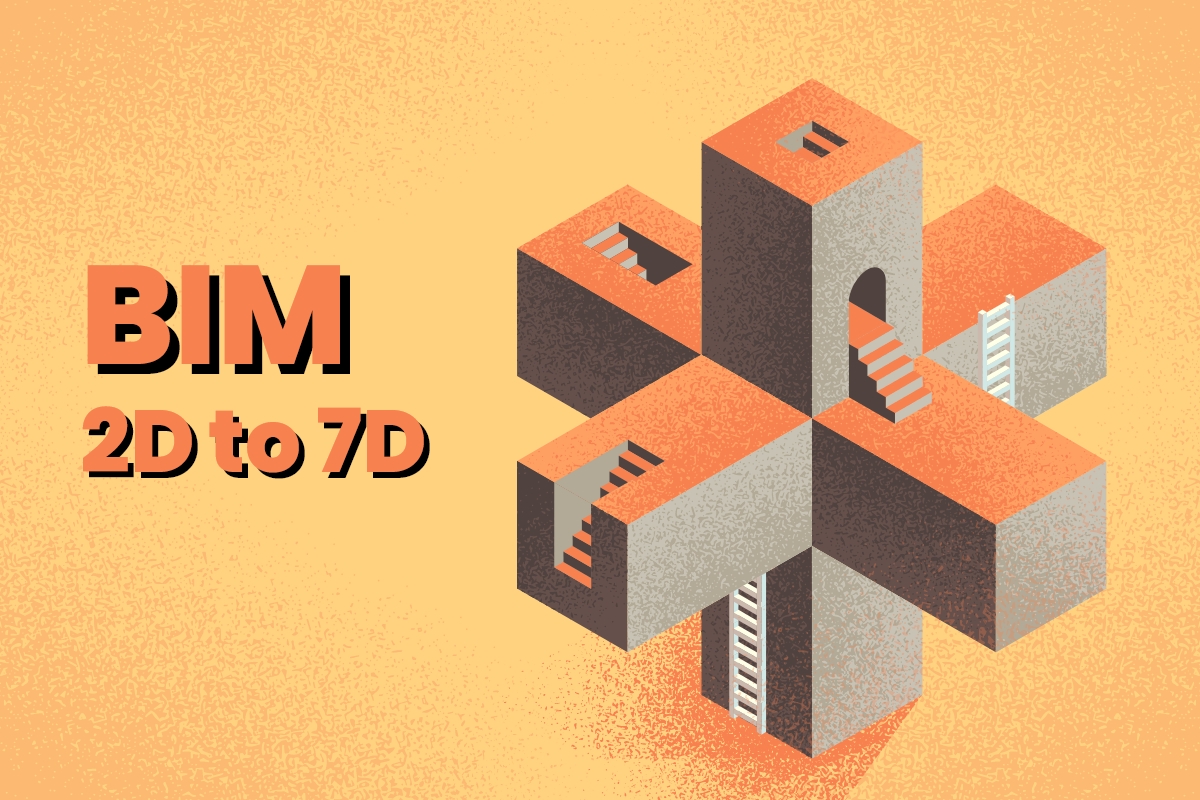Building information modeling is one of the groundbreaking technologies in the architecture and construction sector. It has altered how architects, designers, and engineers manage the complex process of construction. BIM services is an intelligent approach to creating digital models and easy construction project data management. As a matter of fact, the BIM has become a significant part of every construction project as it eases the process, offers comprehensive solutions and manages the project with utmost accuracy and efficiency while enhancing the collaboration and communication. From the initial stage of the project till the last stage, 3D BIM services help in the full creation of a 3D model of the project, entailing many benefits, such as
- Enhanced communication and collaboration
- Better Visualization
- Improved Safety
- Better Risk Management
- Cost Saving
- Clash Detection and Resolution
- Easy Resource Planning
With a variety of benefits of BIM services, the leap in the architecture and construction sector transformed from a 2D CAD drawing of the project. Drastically, changes in the approach with BIM impacted the design process, availing different aspects of the modeling process with a variety of BIM dimensions.
Transform Construction Project with 2D TO 7D BIM Dimensions
The implementation of BIM is incorporated with specific parameters based on the project requirements and complexities. These pre entailed cases are known as BIM dimensions. This helps provide the user with intricate information about the project, enhancing the design, engineering, and execution process. Over the years, as technology and innovation paved into the industry, BIM dimensions gained traction from 3D to 4D,5D, 6D, and 7D, which significantly became the components of future growth in the construction sector. The BIM dimension types help offer specific information about the purpose and benefits of a particular construction stage.
Explore 2D TO 7D BIM Dimensions
As BIM services play a significant role in today’s modern architecture and construction process, architects and engineers leverage the power to enhance the end goal of the project. Moreover, with BIM technology, AEC professionals find it easy to manage and execute the project regardless of the complexity and size. However, as the technology grew, so did the power of 3D BIM services, which now entail 2D to 7D dimensions, each having a specific purpose, benefit, and result. As a matter of fact, these BIM dimensions are used to understand the project cost, timeline, sustainability, and material and facility management. Apart from that, with the specific use of BIM, each dimension helps AEC professionals to depict the particular stage risk, information, and strength, ensuring the safety of each construction stage.
- 2D & 3D BIM Modeling:- This model consists of the X and Y axes and is related to information about construction projects. The model offers parameters, constraints, and concepts that are helpful for architects, designers, and engineers. Furthermore, 3D BIM modeling is a geometric model consisting of the X, Y, and Z axes that depict detailed information with enhanced visualization of the entire project.
Benefits- Induces with accuracy and Efficiency
- Better internal coordination
- Easy Sharing
- Eliminates Rework
- 4D BIM Modeling:- 4D BIM modeling is used to plan the project considering the timeline. This involves information or data that predicts the completion of the project stage or the entire project, along with significant evolution over time, such as time for installation, operational activities, and more.
Benefits- Improved site planning
- Optimized Scheduling
- Collaboration with Stakeholders
- Reducing Costly Delays and Rework
- 5D BIM Modeling:- This BIM model consists of everything from 2D to 4D with added features of cost estimation for the overall project or the particular stage of the construction, including costs for material, labor, equipment, and more. This helps project owners review the project on financial terms and eliminate any monetary problems during construction.
Benefits- Real-Time cost evaluation
- Budgetary Analysis
- Budget Overshoot
- Regular Reporting and Monitoring
- 6D BIM Modeling:- This modeling helps to elaborate the facility management stage of the construction project, offering clarity of information and documentation.
Benefits- Relevancy of Construction Data
- Technical Specification
- Enhancing Quality Service
- 7D BIM Modeling:- 7D BIM consists of analyzing the energy consumption of the building and helps to cater to the sustainability aspect of the entire project. From the initial design, 7D BIM modeling estimates the energy and helps to develop better sustainable options.
Benefits- Reduced Energy Consumption
- Faster Decision Making for Stakeholders
- Facilities Economic and Operational Aspect
The dimensions mentioned above signify the sheer importance of BIM services in every construction project. BIM helps develop a modernistic design approach that considers today’s environmental factors. In fact, BIM helps develop accurate and efficient designs and provides safety and risk management for on-site construction professionals. Leveraging BIM technology will only enhance project efficiency and facilitate better facility management services. Also, with the help of BIM modeling services, renovation and refurbishment projects are catered to with precision.
Final Words
With the benefits of BIM modeling services provided, construction and architecture projects are catered to with digital representation that helps to develop better outcomes and enhance safety concerns. Moreover, utilizing every BIM dimension can benefit the project in terms of cost, timeline, information, and sustainability standards.
